For decades, trade and economic relations between China and the US were of great significance for the two countries, and for the stability and development of the world economy. China-US relations have developed steadily since the establishment of diplomatic ties between China and the US, with fruitful results achieved in trade and investment. However, the US side has been contradicting itself and constantly challenging China since the new administration of the US government took office in 2017, causing serious damage to the economic and trade relations, which developed over the years through the collective work of the two governments and the two peoples. It poses a grave threat to the multilateral trading system and the principle of free trade.
This September, the Information Office of the State Council of the People’s Republic of China released the white paper “The Facts and China’s Position on China-US Trade Friction”, aimed to clarify China's stance on trade friction with the US, and pursue reasonable solutions. Highlights include several key figures from the white paper show how China-US relations have been developed and benefited both sides throughout the ages.
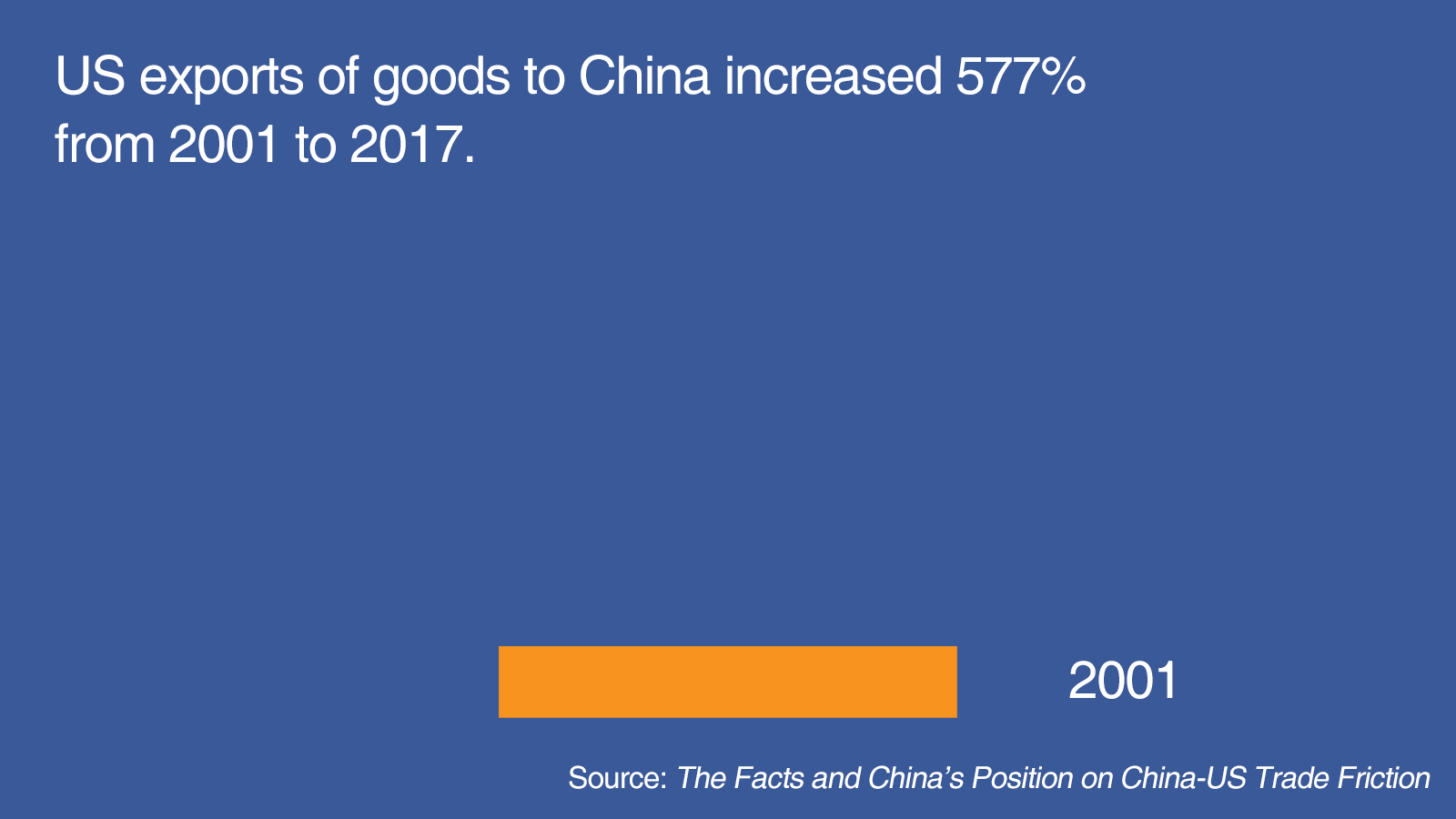
Two-way trade in goods has grown rapidly. UN statistics indicate that in 2017 US exports of goods to China amounted to $129.89 billion, a 577 percent increase from the $19.18 billion in 2001, and far higher than the 112 percent average growth rate of overall US exports.
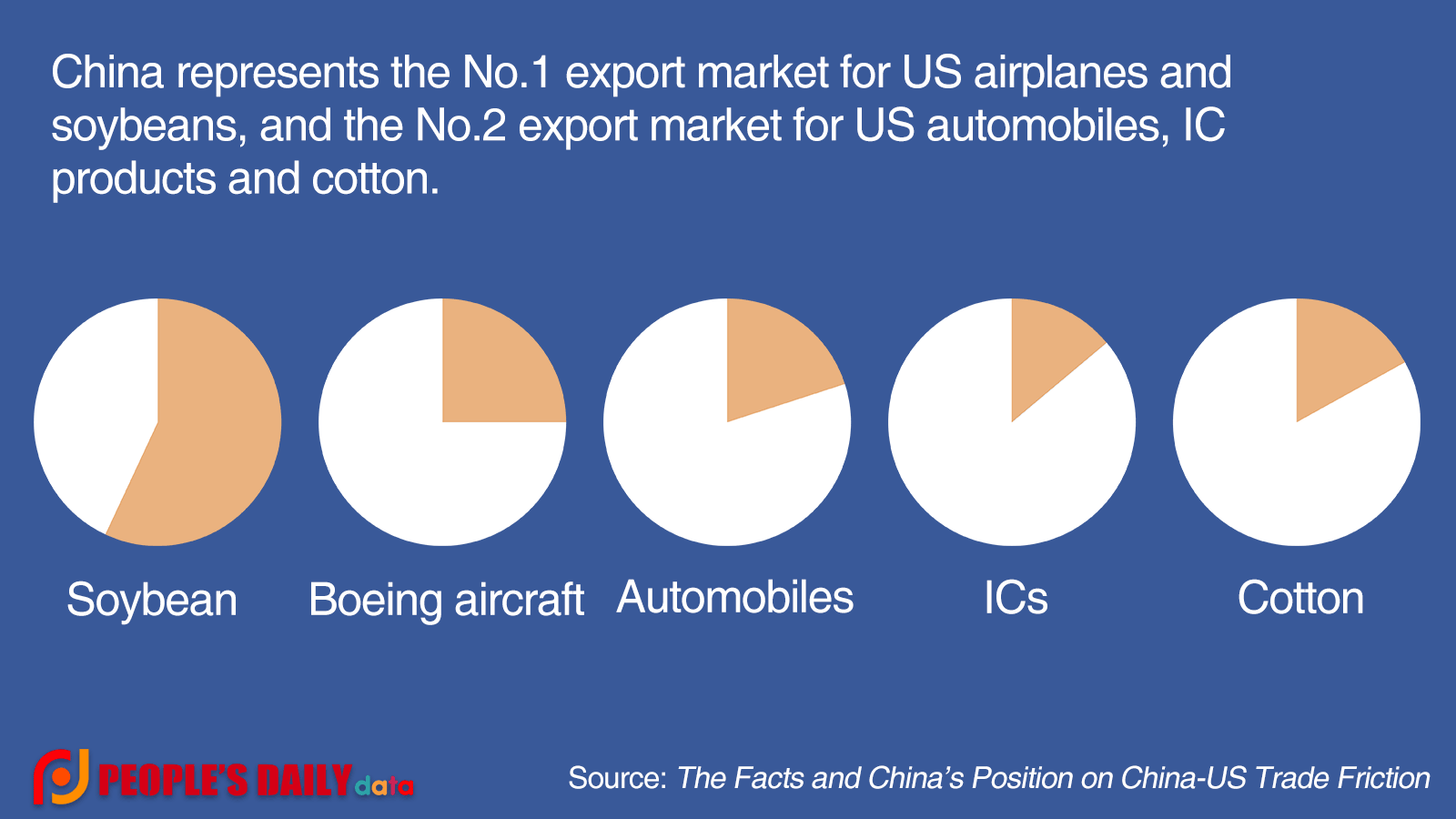
China represents the No.1 export market for US airplanes and soybeans, and the No. 2 export market for US automobiles, IC products and cotton. In 2017 China took 57 percent of US soybean exports, 25 percent of Boeing aircraft, 20 percent of automobiles, 14 percent of ICs and 17 percent of cotton.
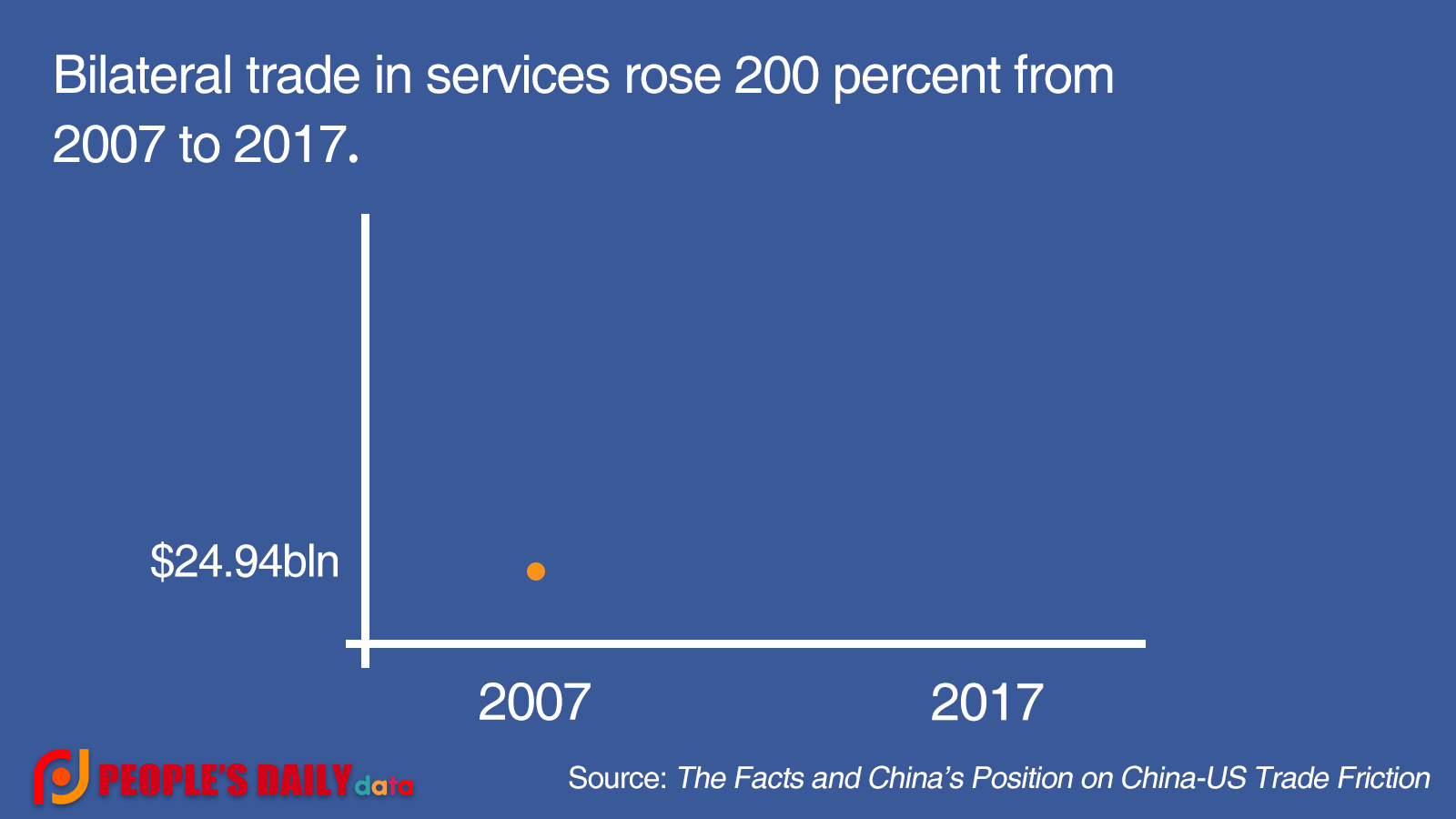
Bilateral trade in services is developing quickly. According to US statistics, two-way trade in services rose from $24.94 billion in 2007 to $75.05 billion in 2017.
Three million Chinese tourists that went to the US spent $33 billion while traveling in the US in 2017. In 2017, there were around 420,000 Chinese students in the US, contributing some $18 billion to local revenues.
China’s payments for US intellectual property doubled in six years from $3.46 billion in 2011 to $7.2 billion in 2017.
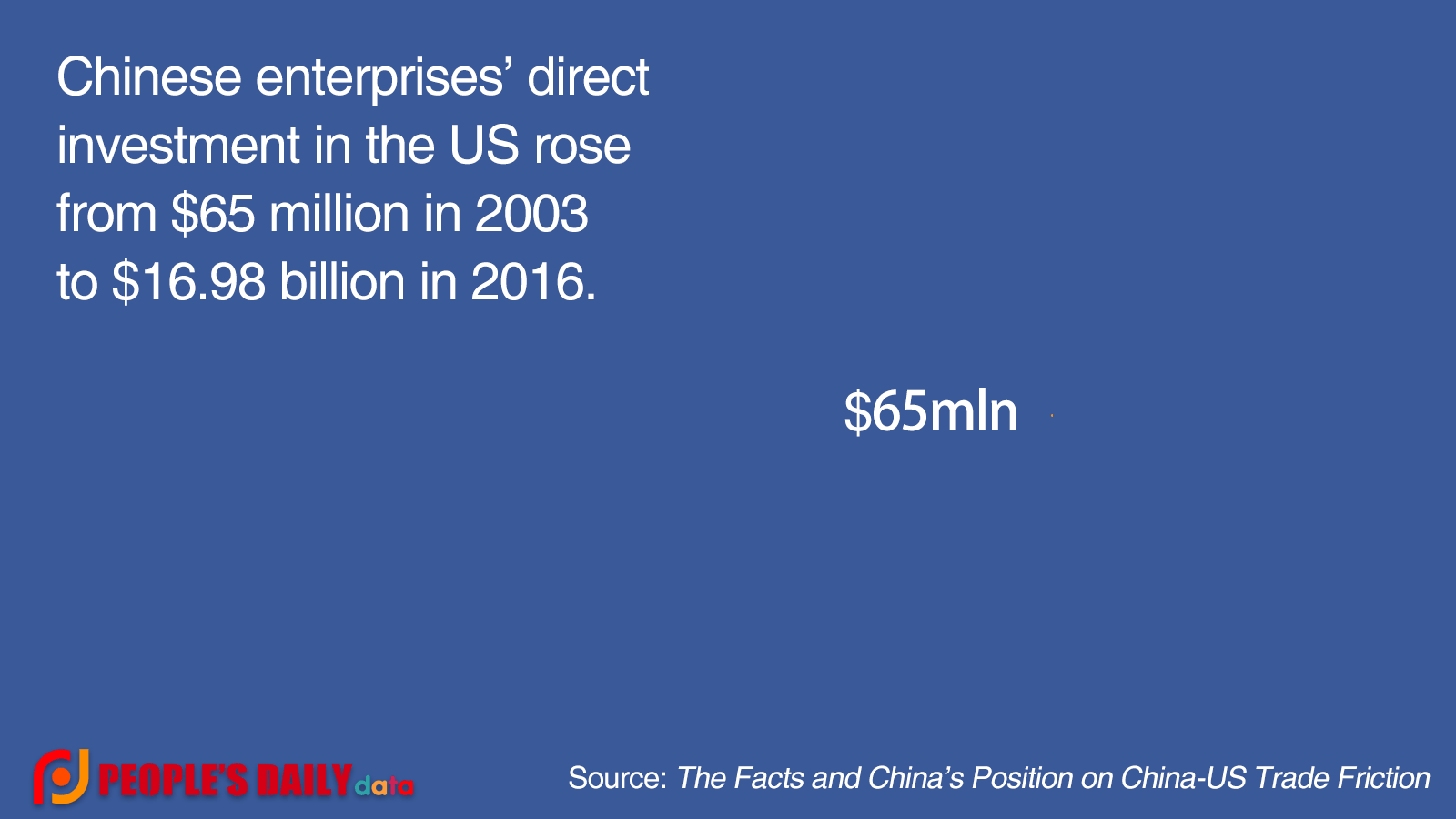
The US is a major source of foreign investment for China. Chinese enterprises’ direct investment in the US rose from $65 million in 2003 to $16.98 billion in 2016.
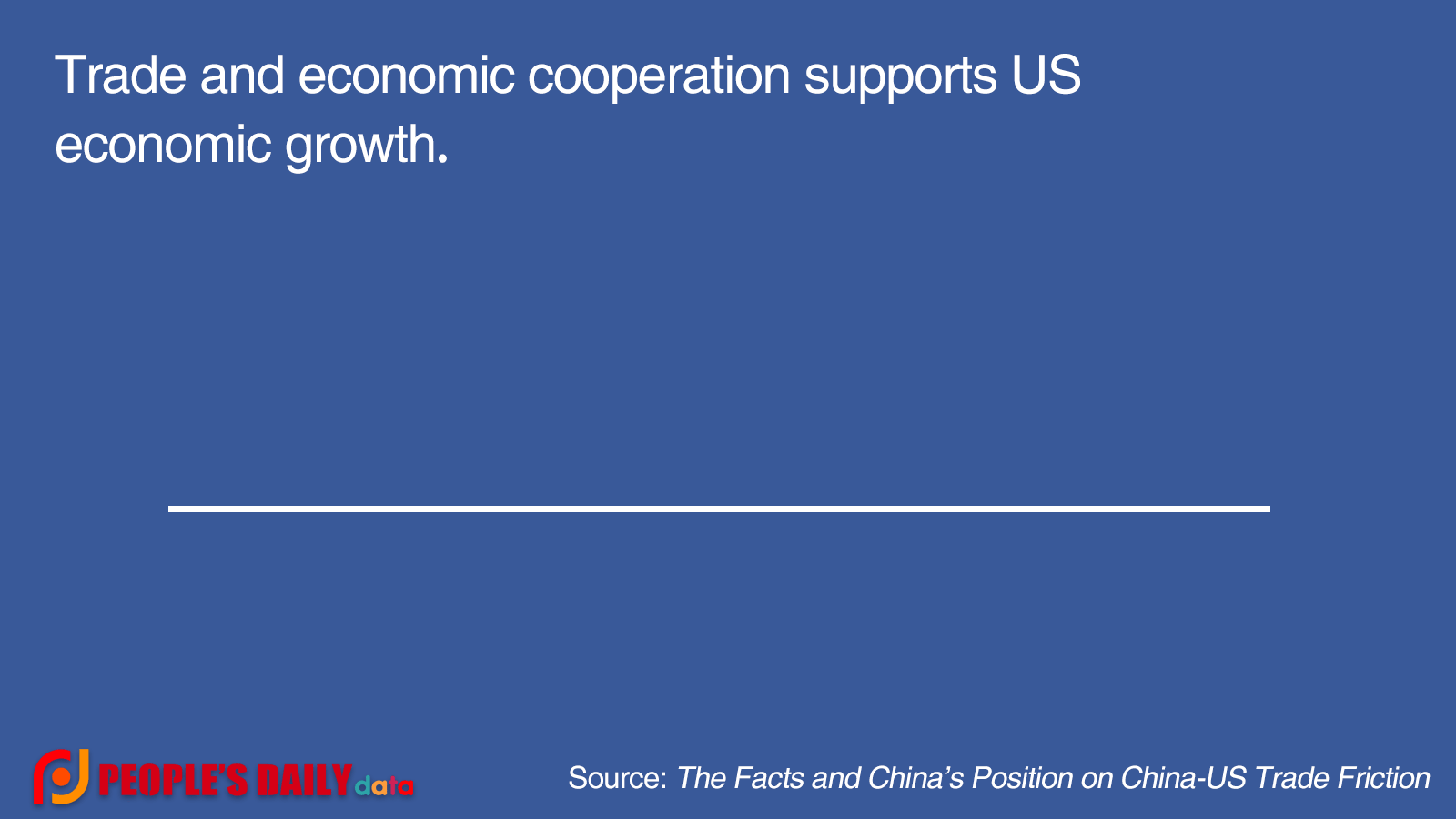
Trade and economic cooperation has supported US economic growth and lowered US inflation. In 2015 imports from China drove up the US gross domestic product by 0.8 percentage points. Exports to China and two-way investment pushed US economic growth rate up by 1.2 percentage points. Value-for-money products in 2015 reduced the consumer price index by 1 to 1.5 percentage points.
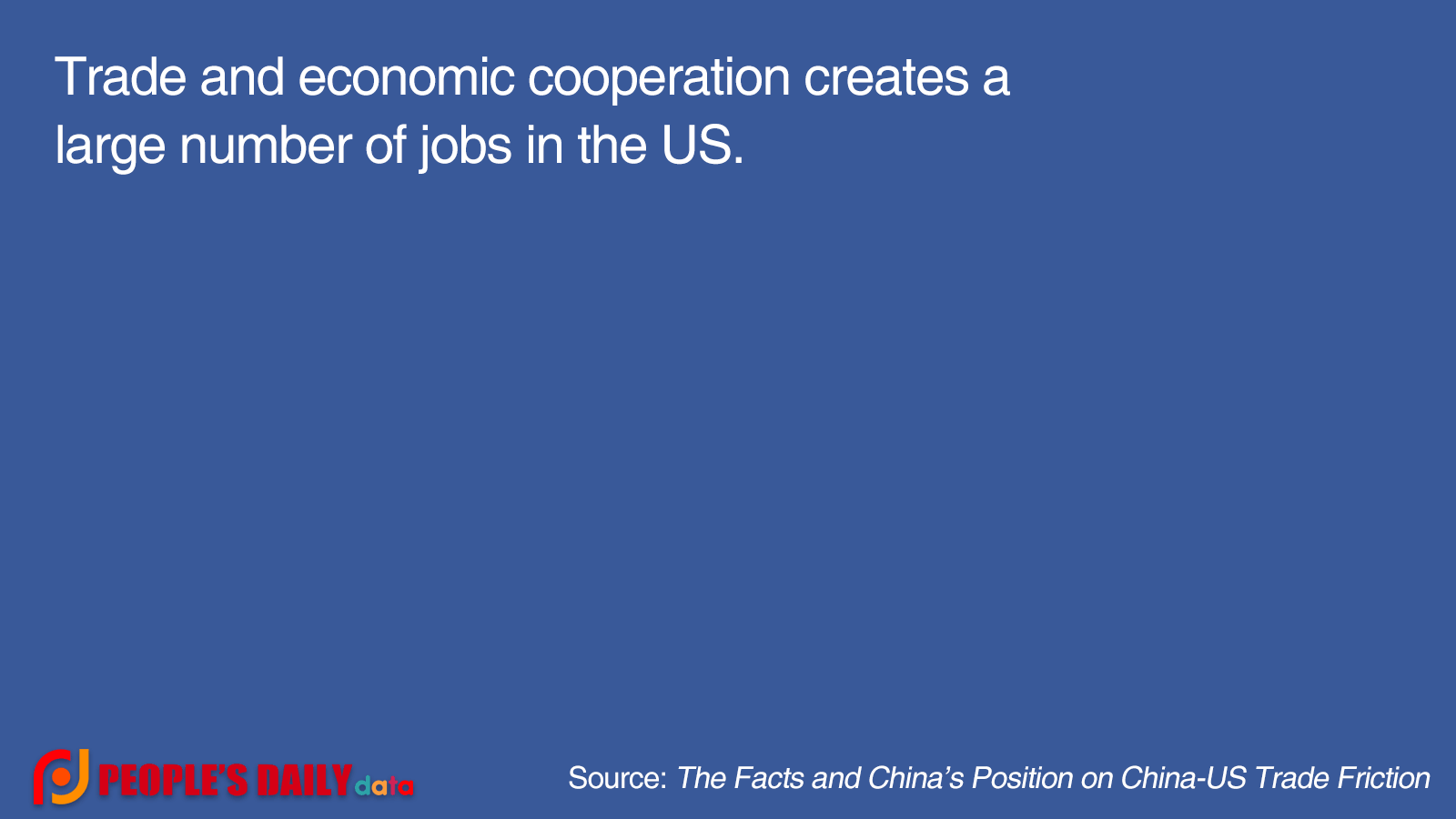
Trade and economic cooperation has created a large number of jobs in the US. According to a US-China Business Council estimate, in 2015, US exports to China and US-China two-way investment supported 2.6 million jobs in America.
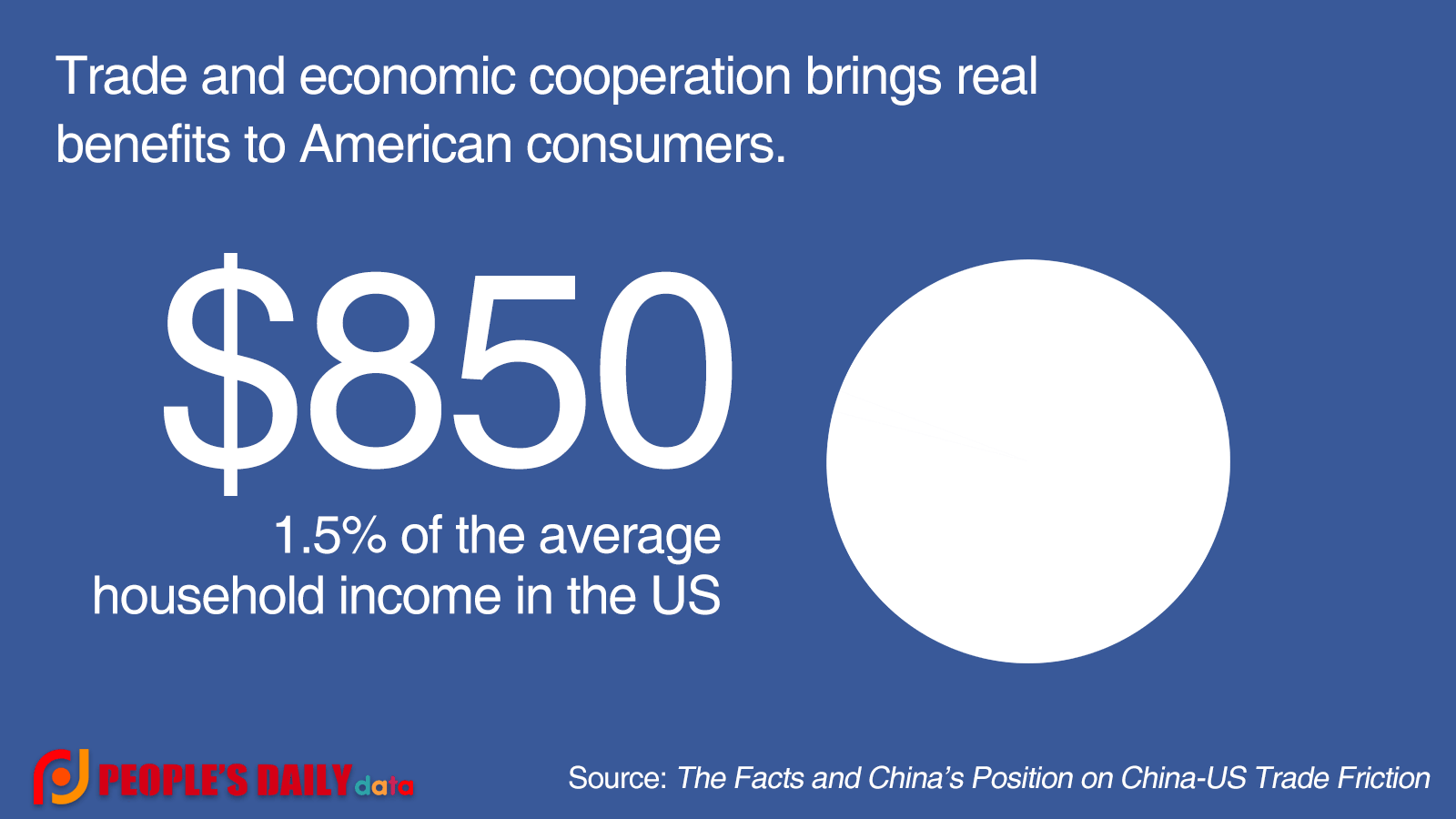
Trade and economic cooperation has brought real benefits to American consumers. According to the US-China Business Council, in 2015, trade with China saved every American family $850 of expenditure each year, which is equivalent to 1.5 percent of the average household income in the US.
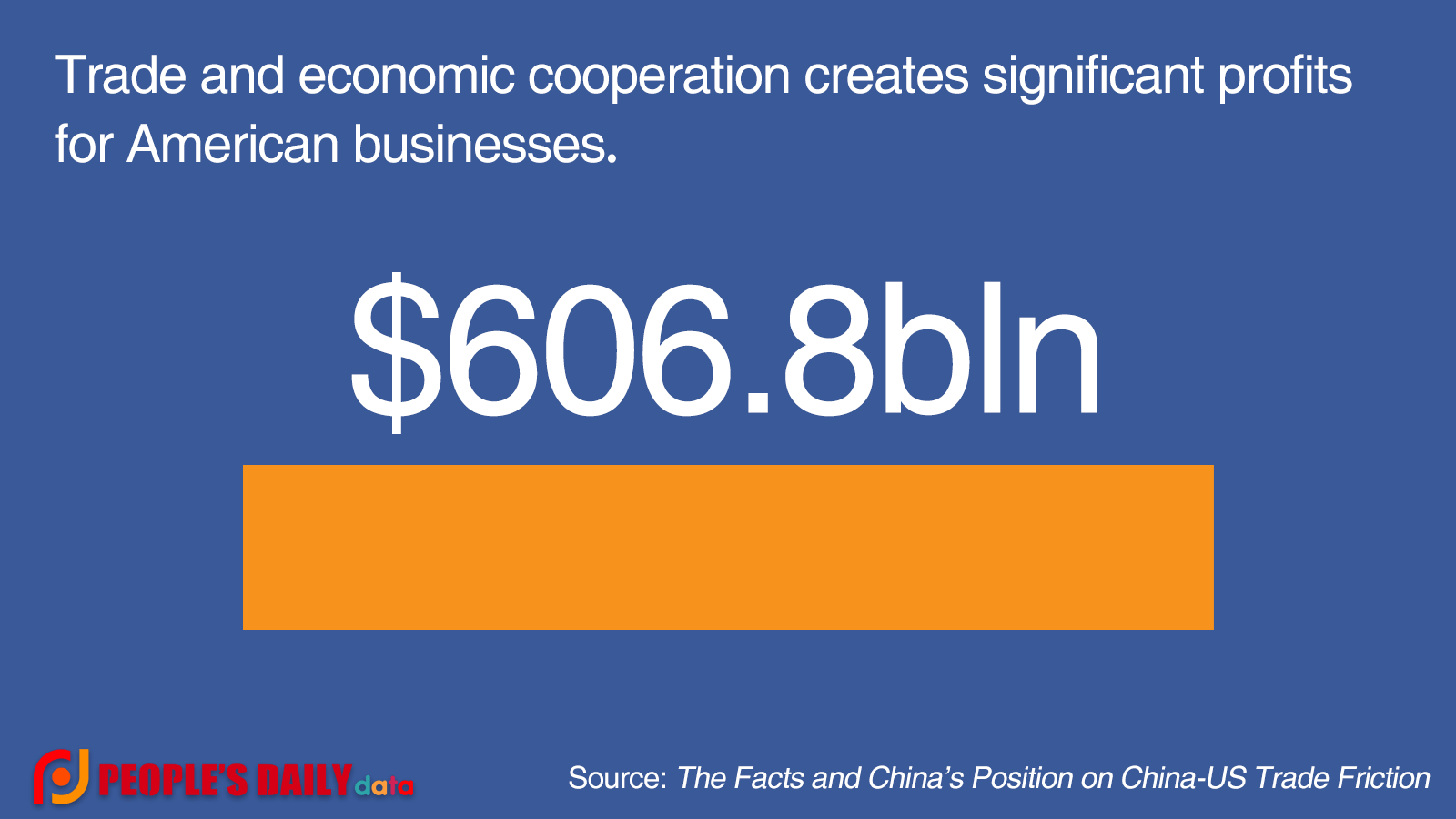
Trade and economic cooperation has created a large number of business opportunities and significant profits for American businesses. According to MOFCOM, in 2016, US firms in China realized about $606.8 billion of sales revenue and over $39 billion of profits.


